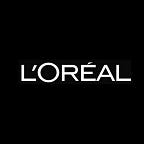How We Are Using VR to Re-design and Optimise Our Plants
Virtual reality has been around a lot longer than you might think. In fact, NASA created the first navigable virtual worlds way back in 1977. However, it’s only in the last decade or so that it’s really come of age. Now, L’Oréal’s Operational Excellence team is using it, along with augmented reality, to revolutionise how plant equipment is designed and implemented. Thanks to VR technology they’re not only creating better working environments for operators, but speeding up the design process, too. So, what was the rationale behind this innovative approach?
Go far with VR
According to Operational Excellence engineer Guillaume Duverger, the aim was to get everyone involved in the creation of future plant equipment.
“The idea is to allow operators and teams to engage with the equipment at the design stage using virtual reality,” he says. “That way we can anticipate any problems very early on.”
What’s more, the operators who’ll be using the equipment also have a say in its implementation. This technique means it can be jointly decided where the best place to install on-site is.
From design to implementation
So, how has the process evolved? Well, before a design is approved, teams from the supplier and the production site carry out two or three design reviews. In these reviews, the teams take turns in evaluating the 3D design using a virtual reality headset. Within less than 20 minutes, they’re able to see how the equipment will look and what might need to be changed.
Once the plan has been approved, it’s time to look at how the future equipment will fit into its environment. Using the headset, the team switches from VR to augmented reality by inputting dimensional data into the 3D rendering. This lets them see whether operators will be able to move freely around the equipment, ensuring they can do their jobs more comfortably.
Smoother integration is easier than ever
“In the past, once the equipment designed by engineers had been delivered to plants, the operators just had to adapt to it. Now, we can turn the process around,” Duverger says.
Now that the equipment is co-designed with the people who are going to use it, it’s also easier to ensure better ergonomics. This is because any adjustments can be made upstream, which optimises commissioning.
Small changes equal big benefits
When L’Oréal first tried VR out in 2017, the benefits of this innovative new technology were immediately clear. A 1.5-metre change in equipment placement created 20% more working space for the operator, resulting in a much more comfortable work environment. Without augmented reality, this seemingly small but important change would never have been discovered.
Rolling out VR for everyone
Now, L’Oréal plans to roll out Duverger’s innovative VR approach more widely in the future, starting with industrial equipment at the investment phase. For the operators using the equipment on-site, this is welcome news.
“We often think that technology is imposed to the detriment of people; in this case it’s the opposite, because operators are helping design their working environment thanks to 3D visualization,” Duverger says.
By making the most of cutting edge virtual reality tech, L’Oréal has made real world changes that benefit everyone. And, happily, there’s plenty more innovative VR concepts to come.
Did we inspire you to join our Operations teams? Find out more about our opportunities here:
